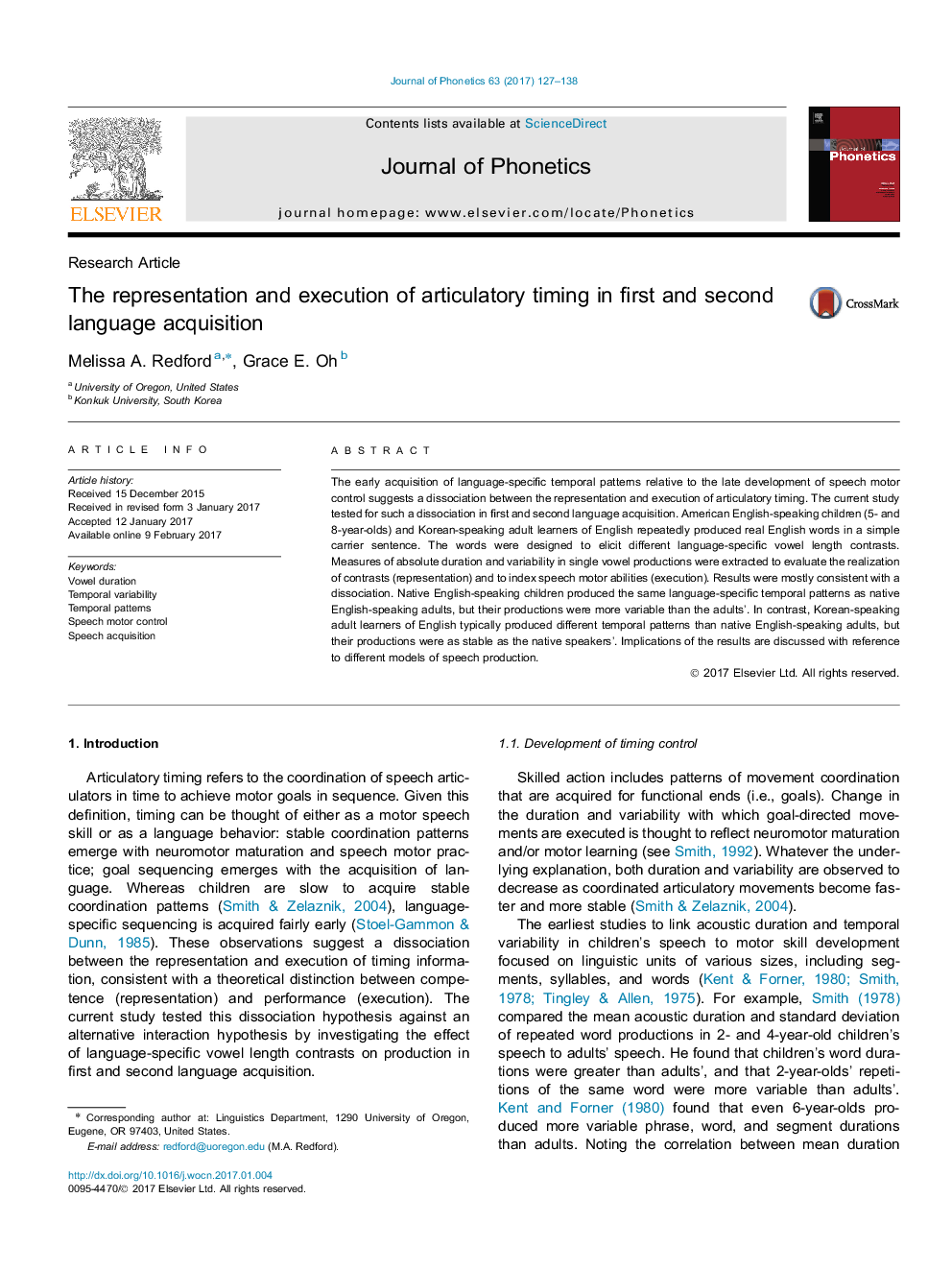| Article ID | Journal | Published Year | Pages | File Type |
|---|---|---|---|---|
| 5124072 | Journal of Phonetics | 2017 | 12 Pages |
â¢The representation and execution of articulatory timing is largely dissociable.â¢Children's speech suggests immature execution of adult-like timing representations.â¢Adult L2 speech suggests mature execution of non-native timing representations.â¢Increasing length/complexity disrupts articulatory timing control in all speakers.
The early acquisition of language-specific temporal patterns relative to the late development of speech motor control suggests a dissociation between the representation and execution of articulatory timing. The current study tested for such a dissociation in first and second language acquisition. American English-speaking children (5- and 8-year-olds) and Korean-speaking adult learners of English repeatedly produced real English words in a simple carrier sentence. The words were designed to elicit different language-specific vowel length contrasts. Measures of absolute duration and variability in single vowel productions were extracted to evaluate the realization of contrasts (representation) and to index speech motor abilities (execution). Results were mostly consistent with a dissociation. Native English-speaking children produced the same language-specific temporal patterns as native English-speaking adults, but their productions were more variable than the adults'. In contrast, Korean-speaking adult learners of English typically produced different temporal patterns than native English-speaking adults, but their productions were as stable as the native speakers'. Implications of the results are discussed with reference to different models of speech production.
